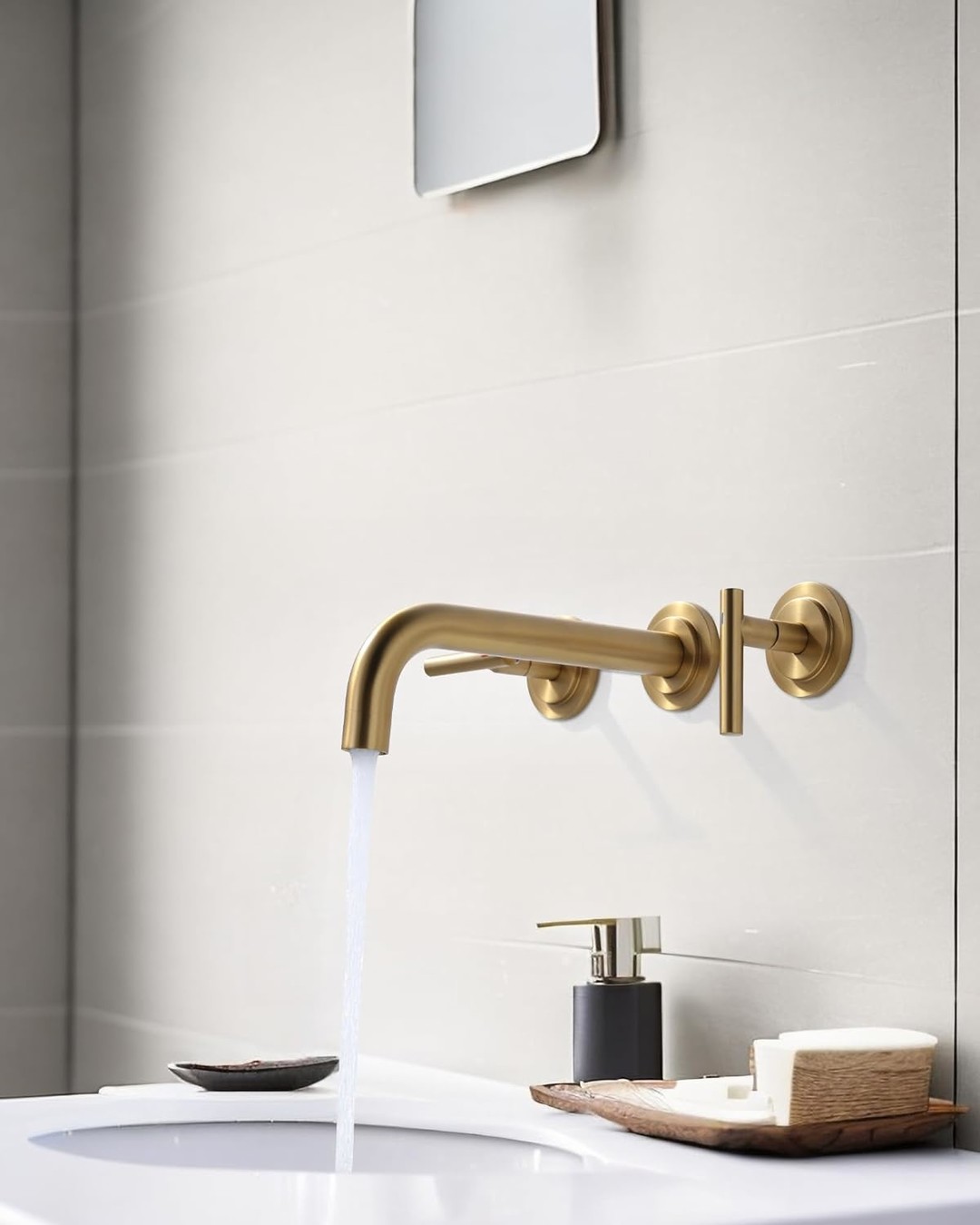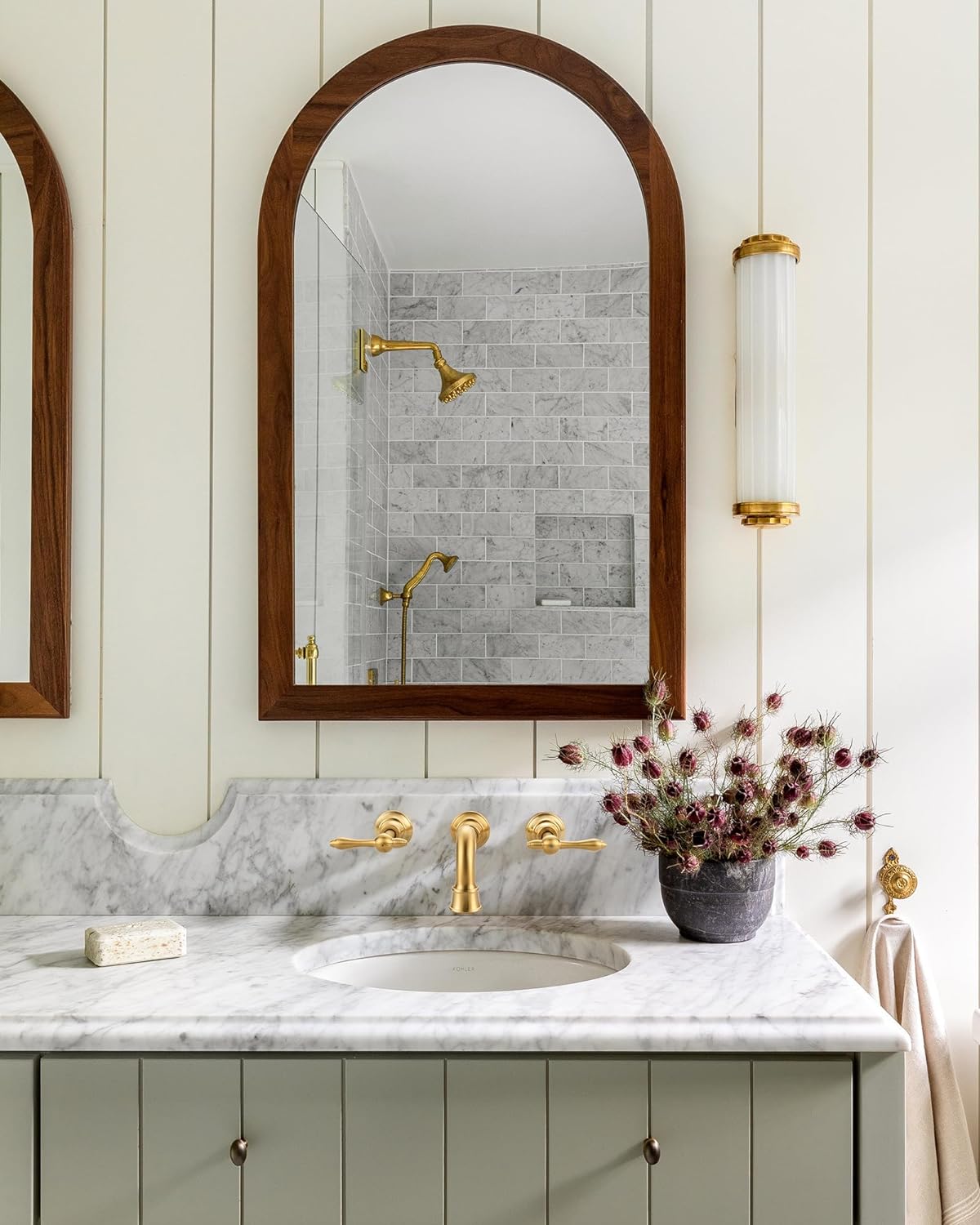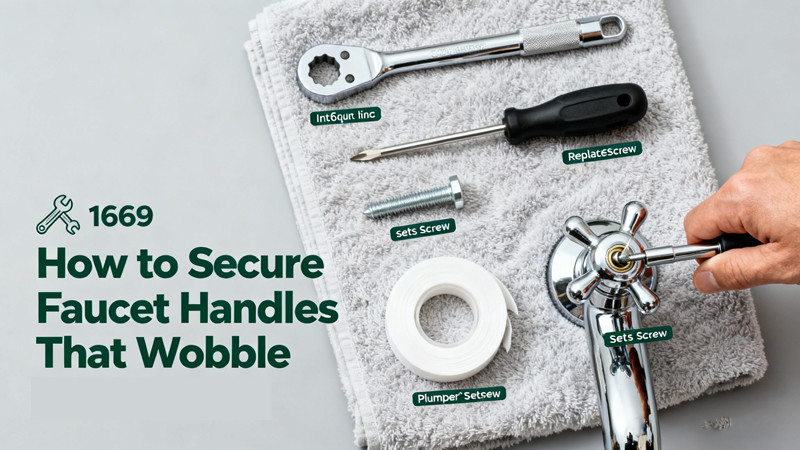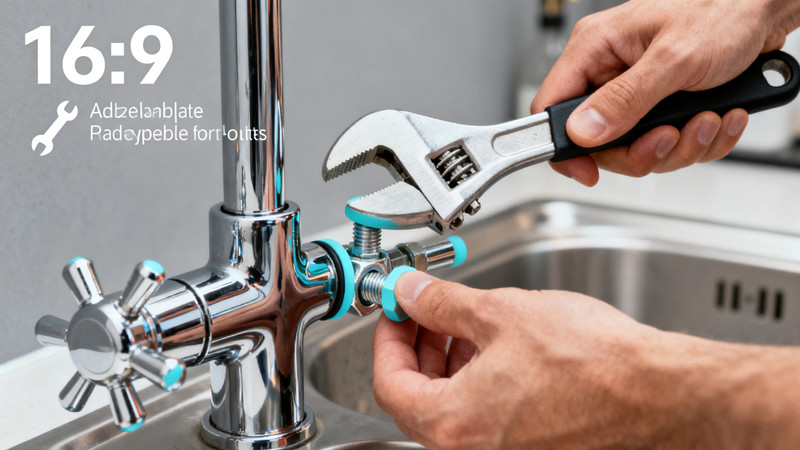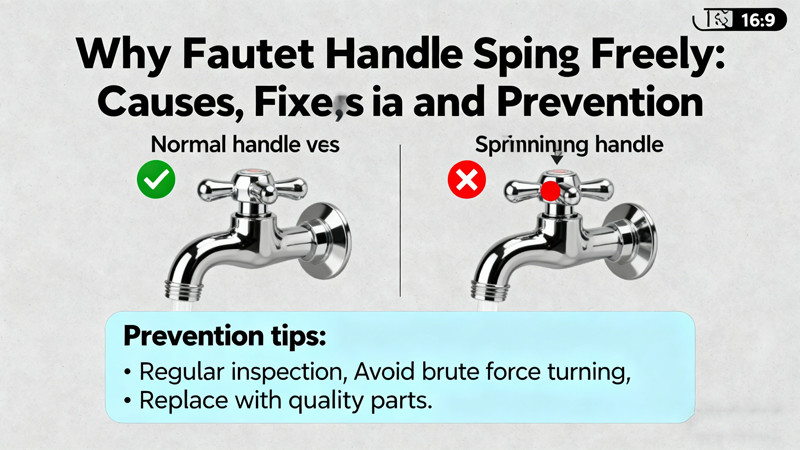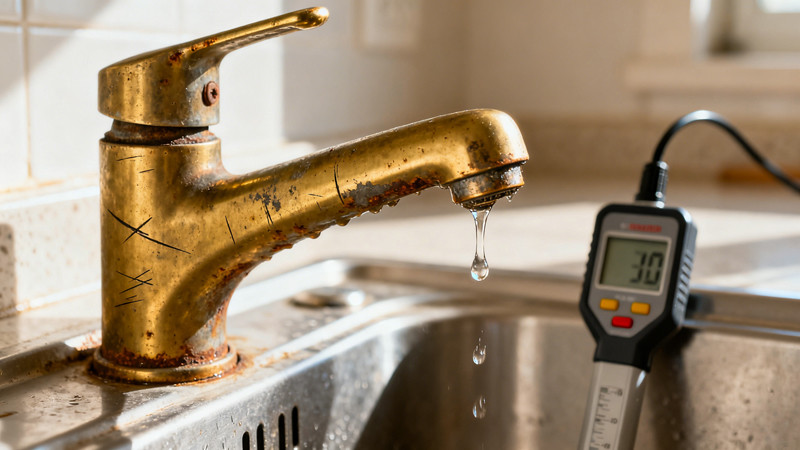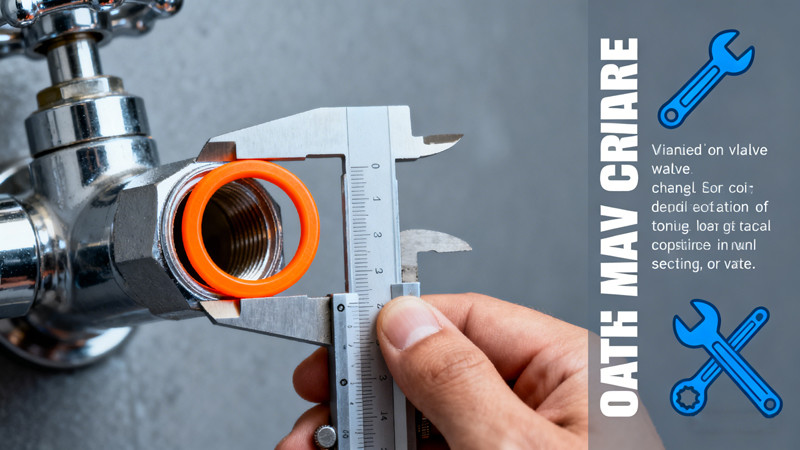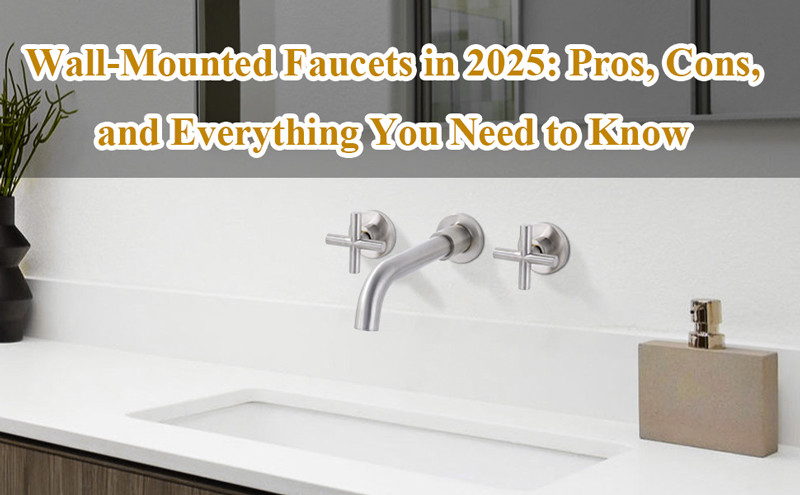
In 2025, wall-mounted faucets are emerging as a stylish and functional choice for both kitchens and bathrooms. While they may have once been seen as a niche or luxury design element, they are now gaining traction for their modern aesthetic, space-saving benefits, and potential for improving water flow. But are they truly worth it in today’s world of abundant faucet options? Let’s explore the pros and cons of wall-mounted faucets, their benefits, and whether they are a smart choice for your home in 2025.
What Are Wall-Mounted Faucets?
Wall-mounted faucets, as the name suggests, are installed on the wall rather than the sink or countertop. Typically, the faucet spout extends directly from the wall, and the controls (handle or lever) are often placed separately or integrated into the wall. They can be used in both kitchens and bathrooms, offering an elegant and minimalist alternative to traditional deck-mounted faucets.
In kitchens, these faucets are commonly paired with sinks that have a deeper basin or integrated countertop, while in bathrooms, wall-mounted faucets are particularly popular with freestanding tubs or vessel sinks, where the faucet is suspended over the bowl.
The Pros of Wall-Mounted Faucets
- Sleek, Modern Aesthetic
One of the biggest reasons homeowners choose wall-mounted faucets is their sleek and modern look. These faucets often feature clean lines, minimalist designs, and high-end finishes that can make a bold design statement. In 2025, the trend toward minimalism in interior design continues to grow, and wall-mounted faucets fit perfectly into this movement. By removing the clutter of traditional faucet bases and handles, wall-mounted options create a streamlined, more visually open space.
For homeowners looking for a luxurious, contemporary feel, wall-mounted faucets are a top choice. They are particularly well-suited for open-concept kitchens or bathrooms, where the faucet is not just functional but a key part of the overall design.
- Space-Saving and Flexibility
Wall-mounted faucets help maximize countertop or sink space, an increasingly valuable feature in today’s homes. In kitchens, wall-mounting frees up the area around the sink, giving you more space for food prep or storage. Similarly, in bathrooms, wall-mounted faucets can be a great solution for smaller vanities or countertops, helping you maintain a clean, clutter-free appearance.
Moreover, because the faucet is installed on the wall, you have the flexibility to place the faucet at an ideal height or location for your needs. This is particularly useful in areas where space is limited, or if you want to create a more customized setup.
- Easier to Clean
Since wall-mounted faucets don’t have a base sitting on the counter or sink, cleaning becomes much easier. Traditional faucets with deck mounts can accumulate grime and soap scum around their bases, which often requires scrubbing to keep clean. With a wall-mounted faucet, the lack of a deck mount reduces this issue significantly. You can simply wipe down the countertop or sink, and the faucet itself is less likely to collect debris and buildup. This makes wall-mounted faucets an attractive option for those who want a cleaner, low-maintenance environment.
- Improved Water Flow
In many cases, wall-mounted faucets provide better water flow. This is especially true in bathroom setups where you may be using larger, high-flow spouts over freestanding bathtubs. Because the faucet isn’t constrained by the sink or countertop, there is often more room for water to flow smoothly, providing a better user experience overall. For kitchens, the ability to adjust the faucet height and spout placement can also result in a more powerful and efficient water stream, making tasks like filling pots or washing dishes more manageable.
- Unique and Customizable Designs
Wall-mounted faucets offer a level of design flexibility that isn’t always available with traditional faucets. For example, you can mix and match wall-mounted faucets with different handles, spouts, and finishes to create a truly customized look. Many designers are taking advantage of this versatility, offering faucets in various materials such as matte black, brushed gold, polished chrome, and even antique finishes. These faucets can match the existing décor or stand out as a statement piece.
The Cons of Wall-Mounted Faucets
- Installation Complexity
One of the main drawbacks of wall-mounted faucets is the installation process. Unlike traditional faucets, which are mounted directly to the sink, wall mounted faucets require more complicated installation. This often involves drilling holes into the wall and ensuring that plumbing connections are properly made. If you’re remodeling an existing kitchen or bathroom, retrofitting a wall-mounted faucet can be costly and time-consuming.
This complexity makes wall-mounted faucets a less attractive option for DIY enthusiasts or those on a budget. It’s essential to hire a professional plumber for installation, which adds to the overall expense.
- Higher Cost
Wall-mounted faucets tend to be more expensive than traditional deck-mounted models. While the prices vary depending on the brand, finish, and design, you can generally expect to pay a premium for this style of faucet. In addition to the faucet itself, you’ll also need to factor in the cost of installation, which can be higher than a standard faucet due to the additional labor and materials required.
For homeowners who are working with a limited budget, the upfront cost of wall-mounted faucets may not be justified, especially when more affordable alternatives provide similar functionality.
- Limited Compatibility
While wall mounted faucets offer aesthetic appeal, they don’t work well with every sink or countertop type. Wall-mounted faucets are often best suited for specific types of sinks, such as deeper or undermount sinks. In a traditional sink setup, they may not provide the ideal water flow or reach. For example, a wall-mounted faucet might be impractical with a shallow sink or in situations where the faucet needs to be directly mounted on the sink for optimal positioning.
- Potential for Leaks
Another drawback of wall mounted faucets is the increased risk of leaks due to the plumbing connections being exposed in the wall. If there’s an issue with the connections or the installation wasn’t done properly, leaks can occur behind the wall, potentially causing water damage. While this risk is not unique to wall-mounted faucets, it can be harder to identify and fix without tearing into the wall.
Are Wall-Mounted Faucets Worth It in 2025?
The answer depends on your specific needs and priorities. Wall-mounted faucets offer undeniable aesthetic appeal, space-saving benefits, and ease of maintenance, making them a great choice for those who value design, cleanliness, and efficiency. However, the higher cost, complicated installation process, and potential compatibility issues may make them less appealing for homeowners on a budget or those working with certain sink styles.
For those renovating or building a home in 2025 with a modern, minimalist design in mind, wall-mounted faucets are certainly worth considering. They can transform your kitchen or bathroom into a sleek, sophisticated space that stands out. However, it’s important to weigh the upfront cost and installation complexity against the long-term benefits.
Ultimately, wall-mounted faucets are best suited for those who are ready to invest in their home’s aesthetics and are prepared to handle the associated installation requirements. If you’re looking for something unique, functional, and stylish in 2025, wall mounted faucets might be the perfect fit for your home.
 WOWOW Faucets
WOWOW Faucets